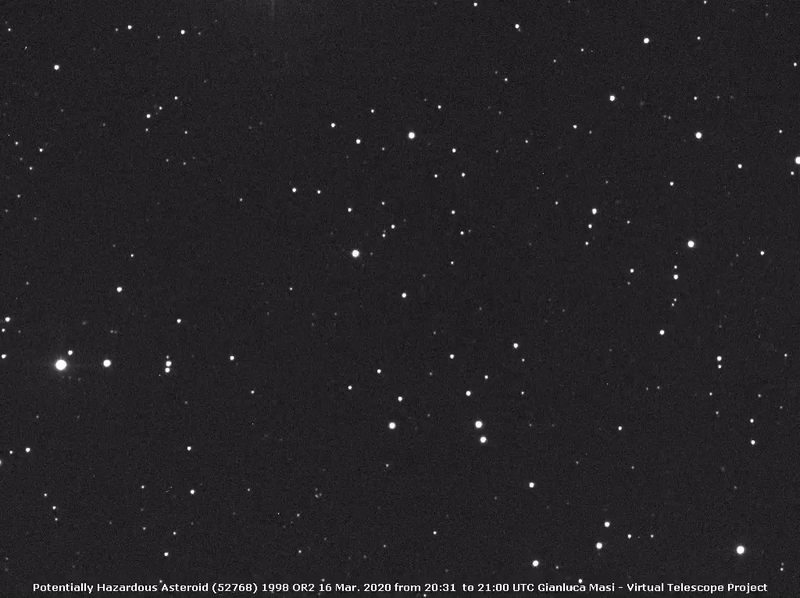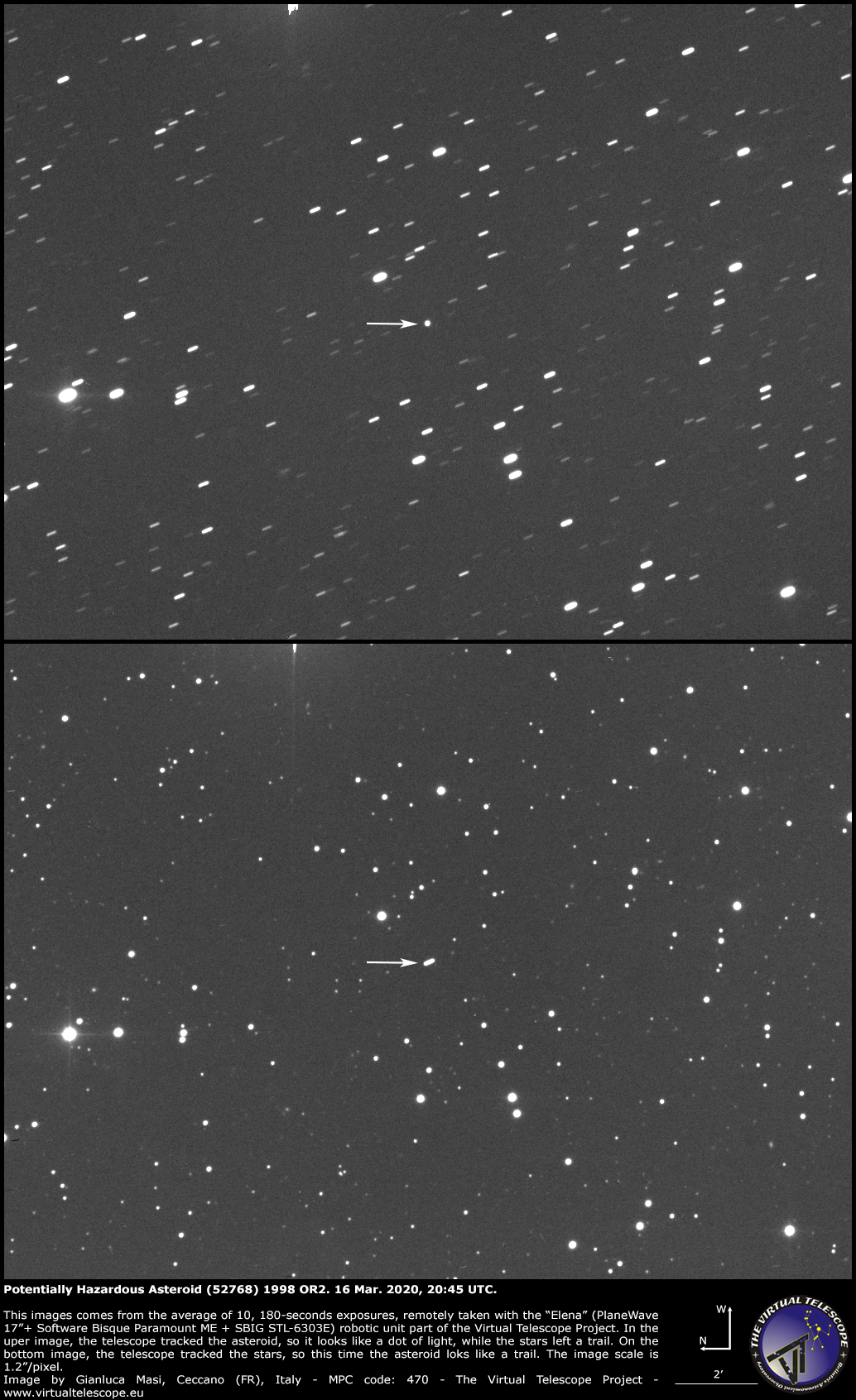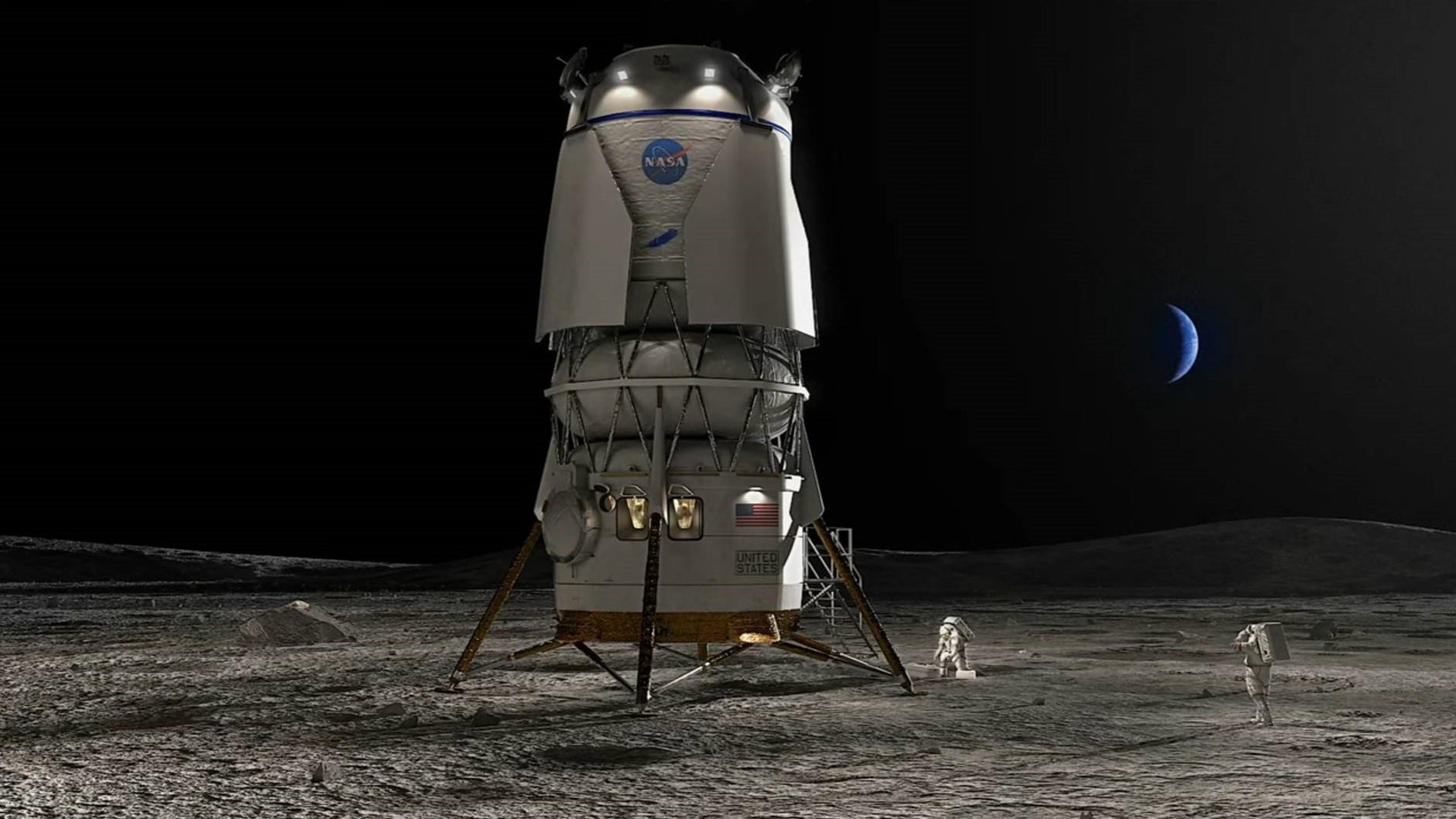Giant 'potentially hazardous' asteroid will fly safely by Earth in April
Don't worry. It won't even come close to hitting us.
A large and "potentially hazardous" asteroid is poised to fly by Earth next month, but don't worry — it poses no threat to Earth.
Asteroid (52768) 1998 OR2 will make a close approach to Earth on April 29. The hefty space rock has an estimated diameter of 1.1 to 2.5 miles (1.8 to 4.1 kilometers), or about the width of the isle of Manhattan.
While an asteroid that size could wreak havoc if it crashed into Earth — prompting some alarmist and misinformed media reports — this asteroid poses no threat.
Video: Big asteroid 1998 OR2 will safely fly by (imagery + orbit animation)
Related: Potentially dangerous asteroids (images)

At its closest approach, which will happen at about 5:56 a.m. EDT (0956 GMT), asteroid 1998 OR2 will be 3.9 million miles (6.3 million km) from Earth. That's more than 16 times the average distance between Earth and the moon.
NASA has classified asteroid 1998 OR2 as "potentially hazardous" not because it puts Earth in danger, but because it fulfills certain criteria in the agency's classification scheme. According to NASA, an asteroid qualifies as "potentially hazardous" if its orbit ever intersects Earth's orbit at a distance less than 4.6 million miles (7.5 million km), or 0.05 astronomical units, the average distance between Earth and the sun.

Asteroid 1998 OR2, which orbits the sun in between the orbits of Earth and Mars, won't fly by Earth again until May 18, 2031, and it will be farther away, passing about 12 million miles (19 million km) from our planet, according to NASA.
Get the Space.com Newsletter
Breaking space news, the latest updates on rocket launches, skywatching events and more!
Its next two flybys, in 2048 and 2062, will be even farther away. The closest flyby of asteroid 1998 OR2 for the foreseeable future will be on April 16, 2079, when it will be only 1.1 million miles (1.8 million km) away.
NASA and its international partners are actively scanning the skies for potentially hazardous asteroids and studying ways to deflect an Earth-bound asteroid before it strikes. So far, about one-third of the 25,000 large asteroids thought to be zooming around in Earth's cosmic neighborhood have been discovered.
- The Hunt for Dangerous Asteroids: Here's How Scientists Do It
- NASA wants a new space telescope to hunt asteroids that may threaten Earth
- Planetary defense joins NASA's menu for next decadal survey focus
Email Hanneke Weitering at hweitering@space.com or follow her @hannekescience. Follow us on Twitter @Spacedotcom and on Facebook.
OFFER: Save at least 56% with our latest magazine deal!
All About Space magazine takes you on an awe-inspiring journey through our solar system and beyond, from the amazing technology and spacecraft that enables humanity to venture into orbit, to the complexities of space science.
Join our Space Forums to keep talking space on the latest missions, night sky and more! And if you have a news tip, correction or comment, let us know at: community@space.com.

Hanneke Weitering is a multimedia journalist in the Pacific Northwest reporting on the future of aviation at FutureFlight.aero and Aviation International News and was previously the Editor for Spaceflight and Astronomy news here at Space.com. As an editor with over 10 years of experience in science journalism she has previously written for Scholastic Classroom Magazines, MedPage Today and The Joint Institute for Computational Sciences at Oak Ridge National Laboratory. After studying physics at the University of Tennessee in her hometown of Knoxville, she earned her graduate degree in Science, Health and Environmental Reporting (SHERP) from New York University. Hanneke joined the Space.com team in 2016 as a staff writer and producer, covering topics including spaceflight and astronomy. She currently lives in Seattle, home of the Space Needle, with her cat and two snakes. In her spare time, Hanneke enjoys exploring the Rocky Mountains, basking in nature and looking for dark skies to gaze at the cosmos.
-
rod ReplyAdmin said:A large and "potentially hazardous" asteroid is poised to fly by Earth next month, but don't worry — it poses no threat to Earth.
Giant 'potentially hazardous' asteroid will fly safely by Earth in April : Read more
"At its closest approach, which will happen at about 5:56 a.m. EDT (0956 GMT), asteroid 1998 OR2 will be 3.9 million miles (6.3 million km) from Earth. That's more than 16 times the average distance between Earth and the moon."
Should be interesting to find out the predicted apparent magnitude. Perhaps small telescope users can observe.

